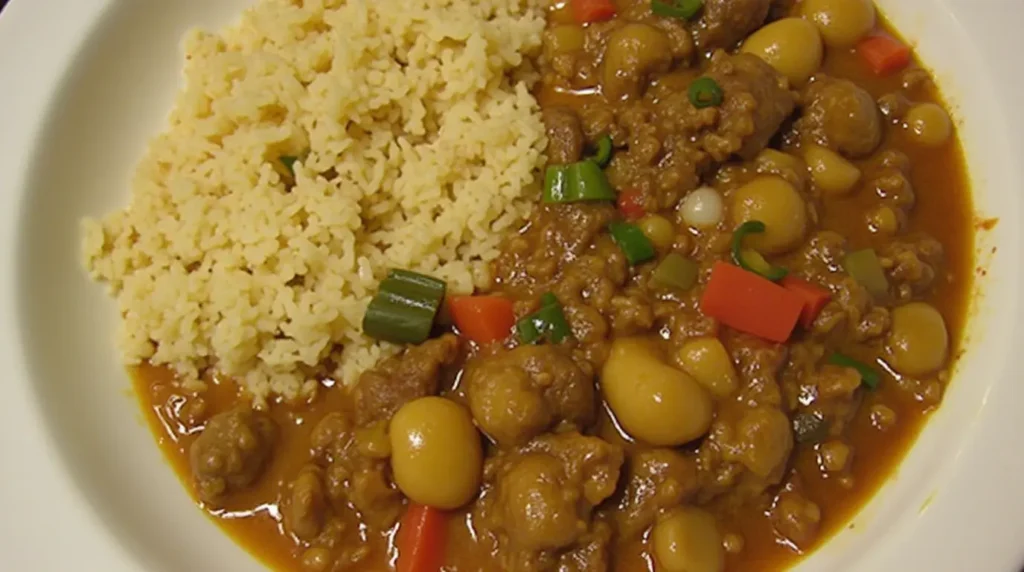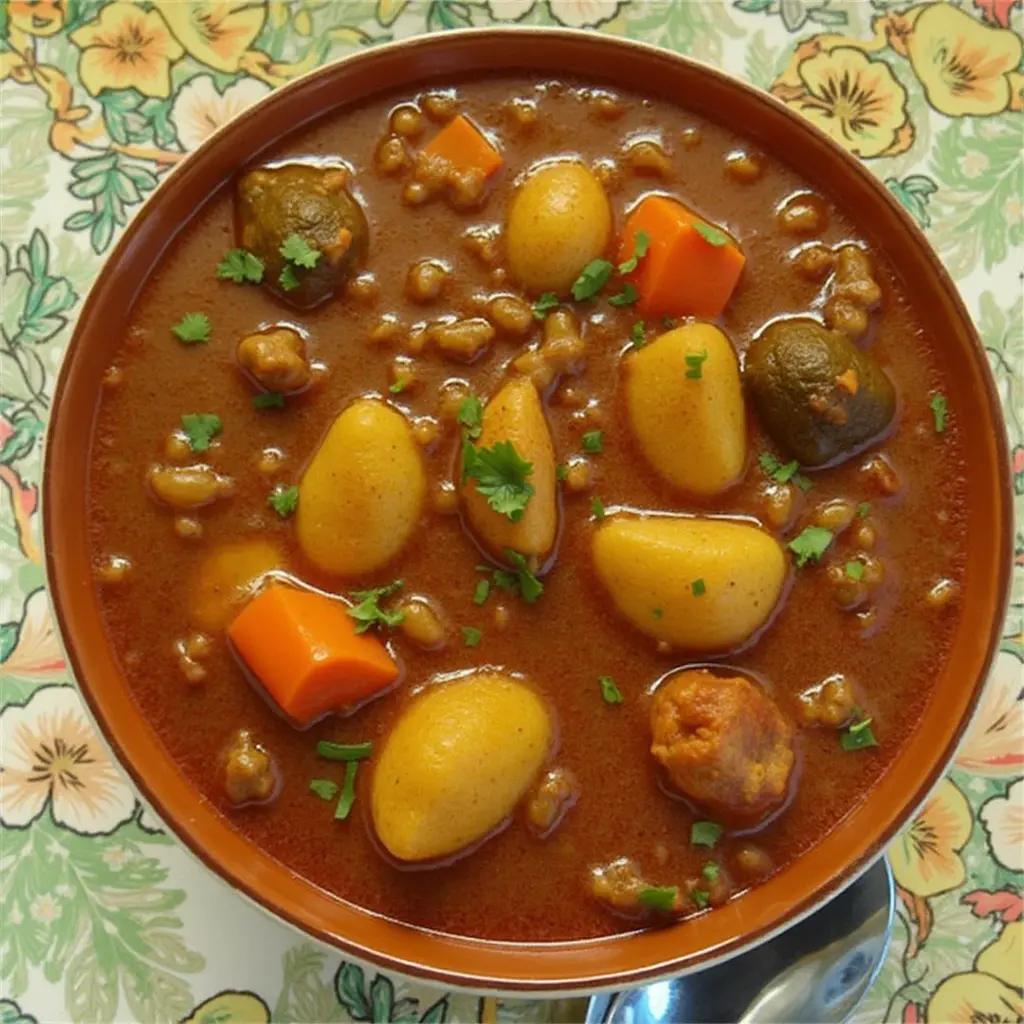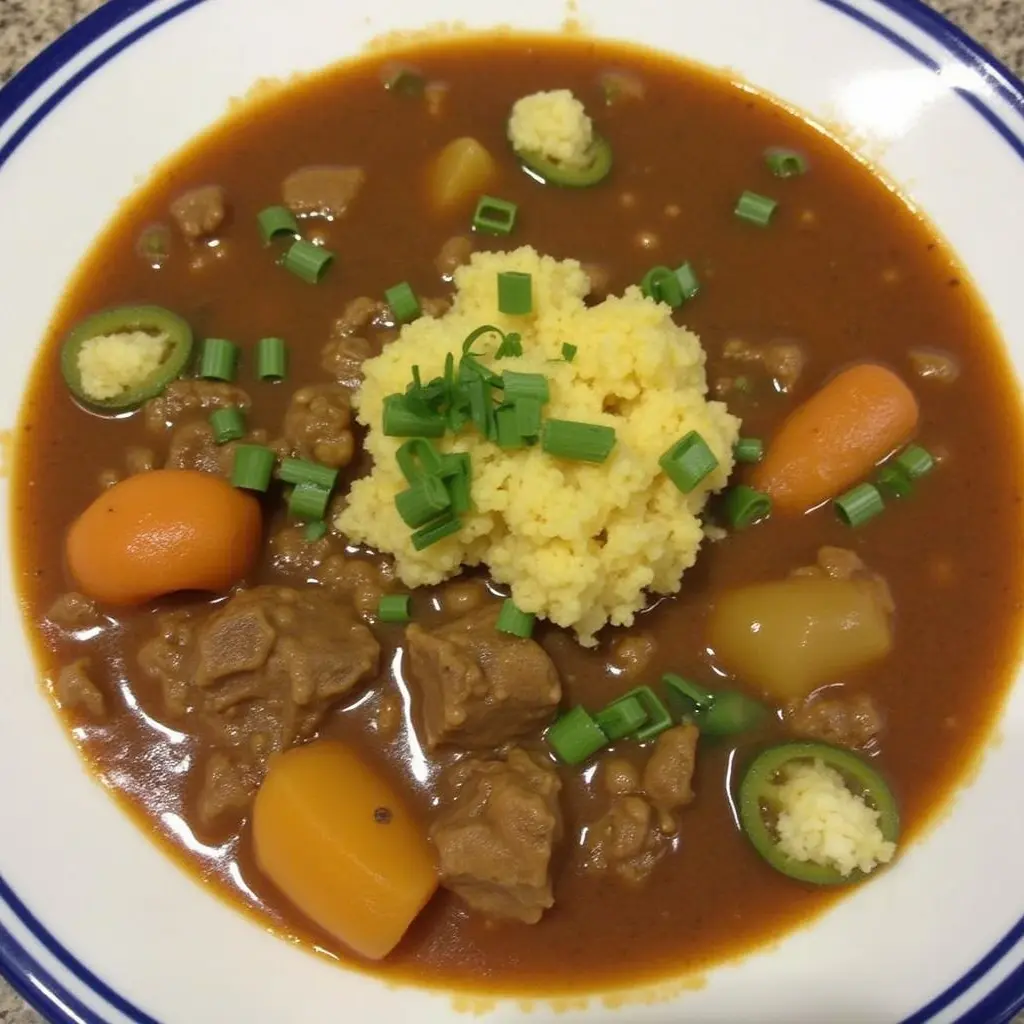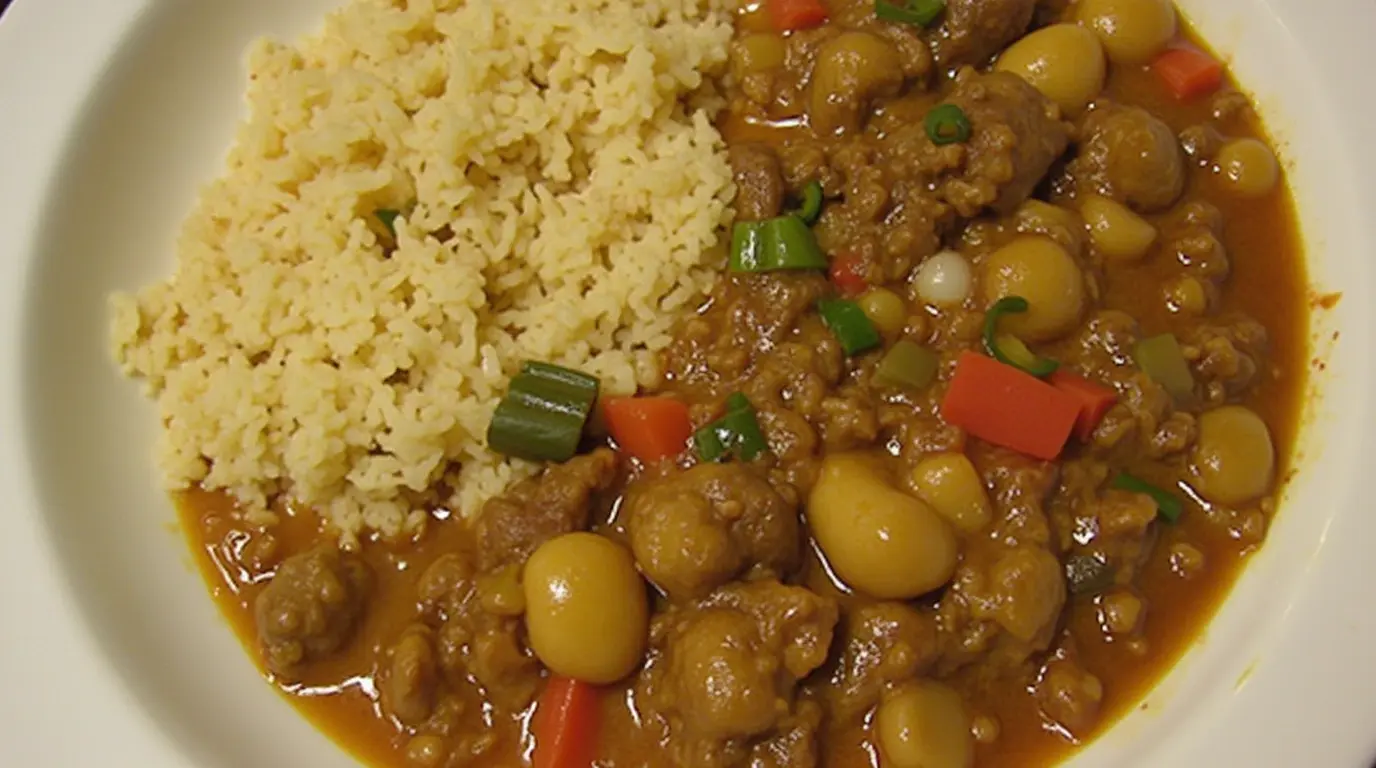New Orleans, often referred to as the “Big Easy,” is a city brimming with history, culture, and a vibrant culinary tradition that reflects its rich, diverse heritage. At the heart of this gastronomic landscape lies a dish that has become synonymous with the city itself: gumbo. Steaming pots of gumbo simmering on stoves across New Orleans evoke a sense of warmth and community, drawing people together over rich flavors and cherished memories.
For many, gumbo isn’t just a meal—it’s a celebration of the melting pot of cultures that have shaped New Orleans over the centuries. From the French, Spanish, and African influences to the Native American and Caribbean contributions, each ingredient, each spice, tells a story of the city’s layered history. And no dish embodies this fusion more than Creole gumbo.
Whether it’s a family gathering or a festive celebration, a bowl of gumbo represents something deeply personal—a connection to roots, to tradition, and to the spirit of New Orleans. As the savory scent wafts through the air, it takes you on a sensory journey, where the richness of the roux meets the smokiness of sausage, the tenderness of chicken, and the briny sweetness of fresh seafood. Each bite brings a symphony of flavors that have been perfected over generations, passed down from one cook to the next, from one kitchen to another.
In this article, we’ll walk you through the art of making a New Orleans Creole Gumbo, a dish that holds a special place in the hearts of many. Whether you’re a seasoned chef or a first-time gumbo maker, this recipe will help you capture the essence of Creole cuisine and bring a little piece of New Orleans into your own kitchen. So, grab your apron, gather your ingredients, and let’s dive into the soul-warming world of gumbo—where the flavors are as bold as the city itself.

Table of Contents
What is New Orleans Creole Gumbo?
New Orleans Creole gumbo is a dish that transcends mere food—it is a symbol of the city’s vibrant culture, history, and diverse culinary influences. A hearty, flavorful stew, gumbo is often considered the quintessential dish of New Orleans, embodying a rich fusion of French, African, Spanish, Native American, and even Caribbean flavors. Its name, derived from the African word “gombo,” meaning okra, reflects one of the key ingredients historically used in the dish, although today gumbo is often thickened with a roux or filé powder instead of okra.
But what exactly makes New Orleans Creole gumbo different from other variations, like Cajun gumbo? The answer lies in the dish’s nuanced ingredients, preparation methods, and cultural influences. Let’s dive deeper into the defining characteristics of this iconic Creole stew.
Defining Creole Gumbo: A Cultural and Culinary Icon
What Makes it Creole vs. Cajun?
While both Creole and Cajun gumbos are deeply rooted in the culinary traditions of Louisiana, there are key differences that distinguish Creole gumbo from its Cajun cousin. At its core, Creole gumbo is more refined, often incorporating a wider range of ingredients and flavors that reflect the cosmopolitan nature of New Orleans. One of the biggest differentiators is the use of tomatoes in Creole gumbo. This addition gives the dish a slightly tangy undertone and sets it apart from the simpler, heartier Cajun gumbo, which typically omits tomatoes.
Creole gumbo also tends to feature a broader variety of proteins, including chicken, sausage, and various types of seafood (shrimp, crab, oysters). Cajun gumbo, by contrast, may rely more heavily on game meats like duck or squirrel, as well as sausage and seafood, but it tends to focus on what is readily available in rural areas.
The seasoning profile in Creole gumbo is often more complex, incorporating a wide range of spices, including paprika, thyme, bay leaves, cayenne, and Creole seasoning. Cajun gumbo, while still flavorful, is often spicier with a more direct heat, using fewer ingredients but focusing heavily on the balance of spice and flavor.
Origins of Gumbo: A Multicultural Melting Pot
The origins of gumbo are as layered and complex as the dish itself. New Orleans is a true melting pot of cultures, and gumbo is a reflection of the city’s diverse history. Its creation is rooted in a blend of culinary traditions brought by different ethnic groups over the centuries.
- French Influence: French settlers brought their techniques for making stews and sauces, including the roux, which is the base for many Creole dishes.
- African Influence: African slaves introduced ingredients like okra, which was originally used to thicken gumbo. Over time, the African contributions to gumbo would evolve, with the dish taking on a more richly spiced and hearty flavor profile.
- Spanish Influence: The Spanish introduced the concept of using tomatoes in sauces, which became a hallmark of Creole gumbo. They also brought the practice of using smoked sausages and pork, further deepening the dish’s flavor complexity.
- Native American Influence: The Choctaw people, who lived in the region long before European settlers arrived, contributed ingredients like filé powder (ground sassafras leaves), which is sometimes used as a thickening agent or seasoning in gumbo.
Gumbo’s evolution represents the culinary intermingling of these cultures, all coming together in a single, soul-satisfying dish. Over time, gumbo has transcended its humble beginnings to become a symbol of the cultural richness of New Orleans.
Gumbo as an Expression of Culture
Gumbo isn’t just a dish—it is an expression of New Orleans’ cultural identity. The way it brings together a variety of ingredients, techniques, and flavors mirrors the city’s own diversity, where different traditions coexist and collaborate to create something greater than the sum of its parts. It’s a dish that speaks to the melting pot of influences, from the African roots that brought okra to the table to the French techniques of creating roux, all blended together with the heat and spice of the Cajun community.
In many ways, gumbo is a living tradition, with each family adding their own twist to the recipe, whether that means adjusting the spice level, swapping out proteins, or tweaking the seasoning mix. And as much as gumbo represents history, it also represents innovation—the way generations of chefs have experimented and adapted to create new interpretations of this classic dish, all while honoring its deep cultural roots.
The Core Ingredients of New Orleans Creole Gumbo
To truly understand New Orleans Creole gumbo, it’s essential to explore the core ingredients that give the dish its signature flavor and texture. Each ingredient plays a vital role in creating the harmony of flavors that makes gumbo so irresistible.
Protein: Chicken, Sausage, and Seafood
A defining characteristic of Creole gumbo is the variety of proteins used. Unlike its Cajun counterpart, which might lean heavily on game meat or seafood, Creole gumbo incorporates a mix of chicken, andouille sausage, and a variety of seafood (such as shrimp, crab, and oysters). The combination of these proteins provides a depth of flavor that makes each bite a rich experience. The smoked sausage brings a savory, earthy quality, while the seafood adds a briny, delicate sweetness that balances the richness of the roux.
The Holy Trinity: Onion, Bell Pepper, and Celery
Known as the Holy Trinity in Creole cooking, this trio of onions, bell peppers, and celery forms the flavor base for almost every Creole dish, gumbo included. These vegetables are sautéed in the roux at the beginning of the cooking process, releasing their natural sweetness and adding a depth of flavor to the dish. The Holy Trinity is the aromatic backbone of Creole cuisine, and gumbo would be incomplete without it.
Seasonings and Spices: Creole Seasoning, Bay Leaves, Thyme, Paprika, and Cayenne Pepper
Seasoning is where Creole gumbo truly shines. Creole seasoning, which typically includes a blend of paprika, garlic powder, onion powder, thyme, and cayenne pepper, is added to the dish for a balanced, aromatic heat. Bay leaves and thyme provide earthy undertones, while the cayenne pepper delivers a spicy kick. Gumbo is known for its flavorful complexity, and the carefully balanced spices ensure that each spoonful is packed with a mix of savory, spicy, and aromatic notes.
Roux: The Heart of Gumbo
The roux is the foundation of Creole gumbo and what sets it apart from other stews. Made by slowly cooking flour and fat (usually oil or butter) together until they form a thick, caramel-colored paste, the roux is responsible for both thickening the gumbo and imparting a deep, nutty flavor. The color of the roux is crucial: it should be golden brown, not too dark, to create the perfect base for the gumbo without becoming bitter. It requires patience and attention, as burning the roux can ruin the dish.
Tomatoes: A Creole Touch
While tomatoes are a common ingredient in many Creole dishes, they are especially characteristic of Creole gumbo. Tomatoes add a subtle acidity and sweetness that balances the richness of the roux and the savory flavors of the meat and seafood. This is another key feature that differentiates Creole gumbo from Cajun gumbo, which typically does not include tomatoes. The addition of tomatoes gives Creole gumbo its signature tangy undertone, contributing to the dish’s vibrant and well-rounded flavor.
A New Orleans Creole Gumbo Recipe to Try at Home
If you’ve ever dreamed of capturing the flavors of New Orleans in your own kitchen, this New Orleans Creole Gumbo recipe is the perfect place to start. Packed with layers of savory goodness, the combination of perfectly seasoned chicken, sausage, seafood, and vegetables comes together in a rich, flavorful stew. Whether you’re hosting a family dinner or craving a taste of New Orleans, this recipe will transport you to the heart of the Big Easy with every bite.
Ingredients
| Ingredient | Quantity |
|---|---|
| Chicken thighs | 2 cups, diced |
| Andouille sausage | 1 pound, sliced |
| Shrimp | 1 pound, peeled |
| Onion | 1 large, diced |
| Bell pepper | 1, diced |
| Celery | 2 stalks, diced |
| Tomatoes | 2 medium, diced |
| Roux (flour + fat) | 1/4 cup flour, 1/4 cup oil |
| Bay leaves | 2 leaves |
| Creole seasoning | 2 tbsp |
| Thyme | 1 tsp |
| Paprika | 1 tsp |
| Cajun seasoning | 1 tsp |
| Chicken broth | 4 cups |
| Cooked rice | 1 cup per serving |
Instructions
- Make the Roux:
In a large, heavy-bottomed pot, heat 1/4 cup of oil over medium heat. Gradually whisk in 1/4 cup of flour, stirring continuously. Cook the roux, stirring often, for about 15-20 minutes until it reaches a rich, golden-brown color. Be careful not to burn it; the roux should have a nutty aroma but shouldn’t darken too quickly. - Sauté the Holy Trinity:
Once the roux is ready, add 1 large diced onion, 1 diced bell pepper, and 2 diced stalks of celery (the Holy Trinity of Creole cooking). Sauté the vegetables for about 5 minutes until they soften and become fragrant. - Add Sausage and Chicken:
Stir in the 1 pound of sliced andouille sausage and 2 cups of diced chicken thighs. Cook for 5-7 minutes until the chicken is browned and the sausage releases its oils and flavor. - Incorporate Tomatoes and Seasonings:
Add the 2 diced medium tomatoes, 2 tablespoons of Creole seasoning, 1 teaspoon of thyme, 1 teaspoon of paprika, and 1 teaspoon of Cajun seasoning. Stir everything to combine and let it cook for another 2-3 minutes to release the flavors from the spices and tomatoes. - Add Broth and Simmer:
Pour in 4 cups of chicken broth, then stir to combine. Add the 2 bay leaves and bring the mixture to a boil. Once boiling, reduce the heat and let the gumbo simmer uncovered for 45 minutes, allowing the flavors to meld and the broth to thicken. - Add Shrimp:
With about 5 minutes left in the simmering process, add the 1 pound of peeled shrimp. Stir gently, and cook until the shrimp turn pink and opaque. - Serve and Enjoy:
Serve the gumbo over a bed of cooked rice (about 1 cup per serving). Garnish with fresh parsley or green onions for a pop of color and extra flavor.


Tips for the Best New Orleans Creole Gumbo
Making a perfect gumbo takes time, patience, and a few key techniques. Here are some expert tips to elevate your gumbo to the next level.
Secrets to a Flavorful Gumbo
- Slow and Steady:
Don’t rush the cooking process—gumbo is all about letting the flavors develop slowly. The longer you allow it to simmer, the more the ingredients will meld together. Aim for a minimum of 45 minutes of simmering to ensure the flavors deepen, but if you can simmer it for an hour or more, even better. - Balancing the Heat:
Gumbo can range from mildly seasoned to incredibly spicy, depending on your personal preference. To adjust the heat:- For mild gumbo, use less cayenne pepper and omit the Cajun seasoning.
- For a spicier gumbo, feel free to add extra cayenne pepper or even a splash of hot sauce before serving.
Remember to taste as you go—seasonings can always be adjusted!
- Homemade Roux:
While it might be tempting to grab a pre-made roux from the store, homemade roux is essential for the best gumbo. It’s easy to make and gives your gumbo that rich, deep flavor that store-bought versions can’t replicate. The key is patience—stir the flour and fat together until it achieves a dark, nutty color, but be careful not to burn it. - Freshness Matters:
The quality of your ingredients is crucial for a truly delicious gumbo. Fresh seafood—whether it’s shrimp, crab, or oysters—makes a big difference in flavor. If you can find fresh, locally sourced chicken and sausage, even better. The fresher your ingredients, the more vibrant and flavorful your gumbo will be.
Variations of New Orleans Creole Gumbo
One of the beautiful aspects of gumbo is its versatility. Whether you’re in the mood for seafood, prefer a heartier dish with chicken and sausage, or are looking for a vegetarian option, gumbo can be easily adapted to suit your tastes.
- Seafood Gumbo:
If you’re a seafood lover, seafood gumbo is the way to go. This version focuses on shrimp, crab, oysters, and fish, often cooked with a lighter stock and served over rice. The seafood adds a briny sweetness that pairs perfectly with the rich roux and spices. For an extra burst of flavor, consider adding a splash of Louisiana hot sauce or a squeeze of lemon to brighten it up. - Chicken and Sausage Gumbo:
The classic chicken and sausage gumbo is a crowd-pleaser, combining the smoky, spicy flavor of andouille sausage with the tender juiciness of chicken. This version is a staple at family gatherings and celebrations, offering a heartwarming balance of protein and flavor. You can experiment with different sausages, from spicy to mild, to adjust the heat level. - Vegetarian Gumbo:
For those who prefer a meat-free option, vegetarian gumbo is a delicious alternative that doesn’t sacrifice flavor. Replace the meats with extra vegetables like okra, mushrooms, and zucchini, and use a vegetable stock in place of chicken broth. For added depth, you can stir in a little filé powder at the end to mimic the earthy richness that meats traditionally provide.
Conclusion:
Creole gumbo isn’t just a dish—it’s a celebration of New Orleans’ rich culinary heritage and the blending of diverse cultural influences that have shaped the city’s food scene. By making gumbo from scratch, you’re not only creating a mouthwatering meal but also connecting with the traditions that have been passed down through generations of New Orleans families. From the smoky sausage to the seafood, the roux, and the Holy Trinity of vegetables, every ingredient tells a story and every step of the process adds to the depth of flavor.
As you get more comfortable making gumbo, don’t hesitate to experiment with your own variations. Maybe you’ll add extra spice, try a different protein, or play with the seasonings to make the dish your own. The beauty of gumbo lies in its flexibility—it’s a dish that can be personalized to suit your taste and creativity.
We encourage you to share your gumbo creations and join the vibrant community of gumbo lovers who cherish this iconic New Orleans dish. Whether you’re a seasoned chef or a beginner, there’s always something new to discover when it comes to gumbo. So, roll up your sleeves, dive in, and enjoy the process—after all, every bowl of gumbo is a new adventure in flavor!

